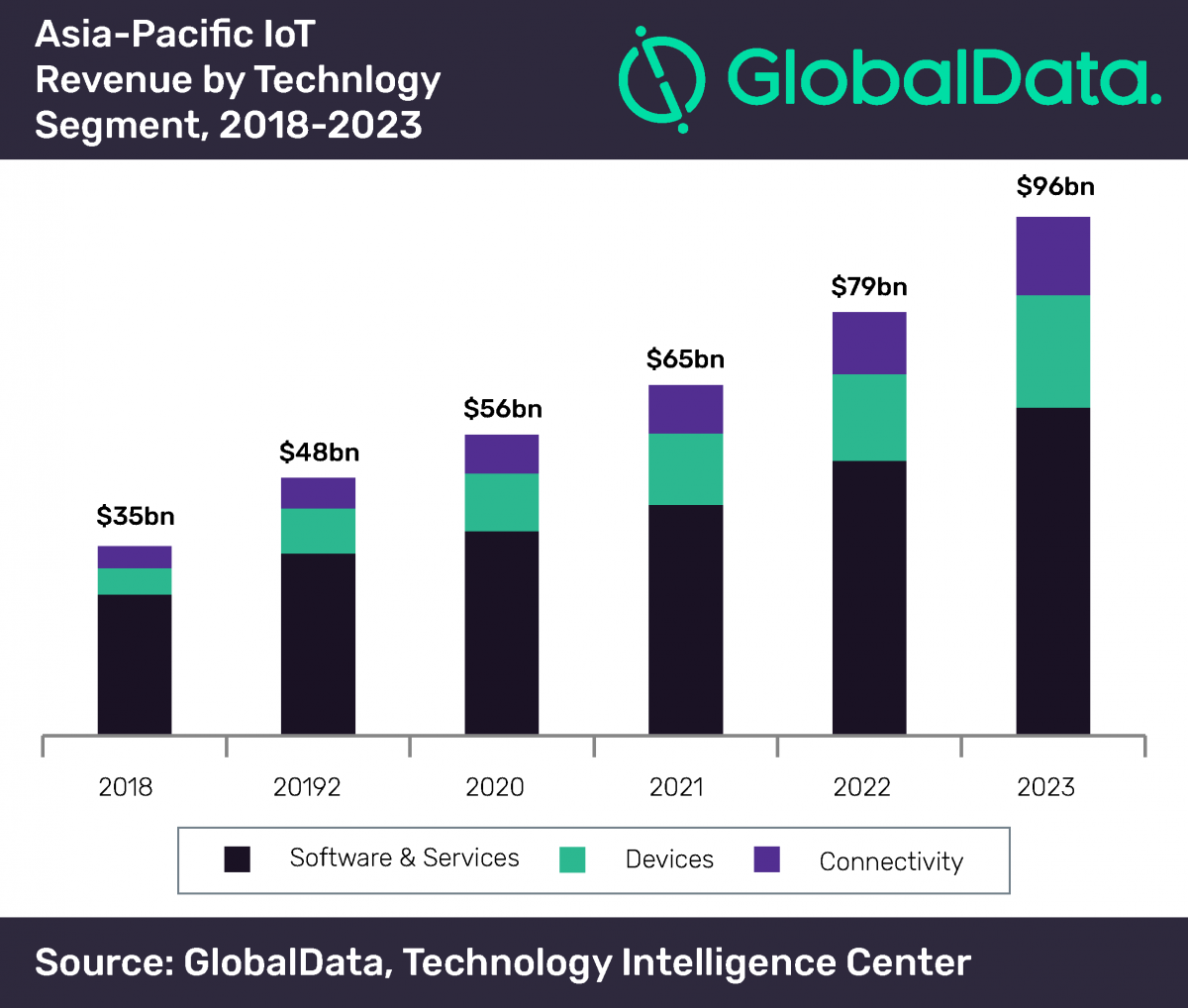GlobalData’s research reveals that the Asia-Pacific (APAC) IoT market will be dominated by software and services. However, growth from connectivity and devices will accelerate with the launch of more cellular-based IoT networks supported by 5G.
Malcolm Rogers, Senior Technology Analyst at GlobalData, comments: “In the IoT marketplace, connectivity is generally seen as the lowest spot in the value chain, followed by devices. The highest value IoT services come from providing software platforms and applications for IoT management and operations. While telecoms operators are well positioned to supply connectivity, many want to move up the value chain to offer higher value services like IoT management platforms.”
One of the key drivers of growth will be the continued focus on smart cities and industry 4.0 initiatives from vertical industries like manufacturing, utilities and energy. Governments along with these industries are expected to spend heavily on IoT services over the forecast period.
In order to grow their revenue from the IoT marketplace operators in APAC are increasingly moving from beyond offering simple IoT connectivity to provide end-to-end IoT platforms, often with an industry specific focus.
Rogers adds: “If telcos want to remain relevant in the IoT marketplace, they need to evolve their service portfolios. Operators in APAC are keenly aware of the IoT opportunity and many, particularly in more advanced mobile markets, are forming IoT strategies to move beyond connectivity to provide additional services around platforms, integration, security, and in some cases applications and operation management.”
APAC operators should be able to grow IoT revenue as cellular technologies such as Narrowband IoT (NB-IoT) and CAT M1 mature and expand in capability. The advent of 5G is also expected to increase revenue from IoT connectivity and devices as well as software and services.
Rogers continues: “5G will enable the deployment of millions of devices and sensors, which in some industries can be used to deliver real time insights into operations, reduce safety hazards and offer services like predictive maintenance.”
Partnerships are critical for the success of a large-scale IoT deployment. Telcos in APAC most commonly start providing simple IoT connectivity platforms that offer onboarding tools, billing and usage monitoring, and controls and basic network security. This is most often accomplished by partnering with major network equipment vendors, who offer dedicated telco IoT platform solutions that telcos either white label or bring to market in a partnership.
Rogers concludes: “More advanced telcos in the IoT space are focusing on developing IoT ecosystems where they bring together connectivity, devices, application and integration capabilities into a single platform through partnerships and their own capabilities. This enables downstream customers to help tailor their IoT services to specific needs, without having to engage multiple stakeholders, which add management complexity to a deployment.”





